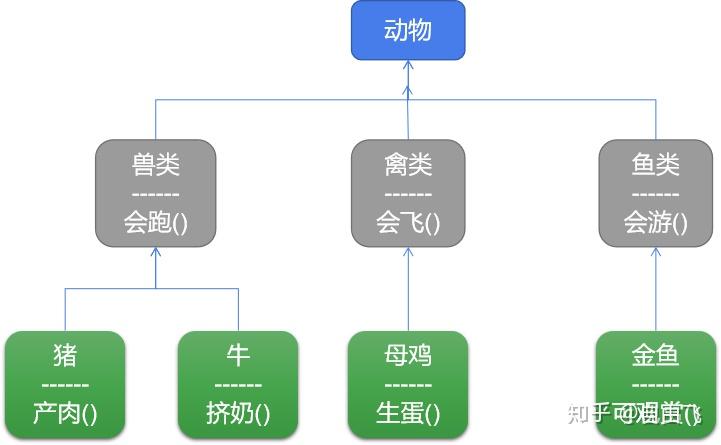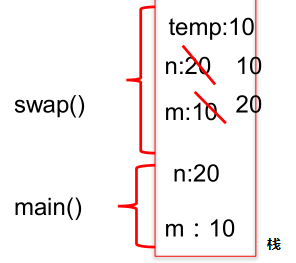面向对象
一、.面向对象和面向过程优缺点
| 面向过程 | 面向对象 | |
|---|---|---|
| 优点 | 复杂问题流程化,进而简单化 | 可扩展性高 |
| 缺点 | 可扩展性差 | 编写复杂 |
二、类与对象
2.1定义类(类名建议用驼峰命名)
一系列共同的属性和方法。 dg: 人类
class 关键字 类名:
pass
class Student:
school='oldboy' #变量表示属性
def choose(self): # 函数表示方法
print("选课....")
def study(self):
print('学习')
2.2 定义对象
对象:属性和方法的结合体
现实生活中:先有对象再有类程序中:先有类再有对象
2.3生成一个对象
# 类加括号,生成对象
stu1=Student()
-
python为类内置的特殊属性
类名.name# 类的名字(字符串)
类名.doc# 类的文档字符串
类名.base# 类的第一个父类(在讲继承时会讲)
类名.bases# 类所有父类构成的元组(在讲继承时会讲)
类名.dict# 类的字典属性
类名.module# 类定义所在的模块
类名.class# 实例对应的类(仅新式类中)
2.3#获取本身属性和方法 通过 . 获取
class Student:
#变量表示属性
school='oldboy'
# 函数表示方法
def choose(self):
print("选课....")
def study(self):
print('学习')
stu1=Student()
#获取属性和方法 通过 . 获取
print(stu1.school) #点出来他的属性,直接用到
print(stu1.choose) #点出来它的方法,而方法又是一个函数,所以当它不加括号时是一个函数名的内存地址
print(stu1.choose())
oldboy
<bound method Student.choose of <main.Student object at 0x00000293B30FDE10>>
选课....
2.3获取类的属性和方法
类.__dict__
# 接上面代码打印
print(Student.__dict__)
{'module': 'main', 'school': 'oldboy', 'choose': <function Student.choose at 0x00000192A8300D08>, 'study': <function Student.study at 0x00000192A8300D90>, 'dict': <attribute 'dict' of 'Student' objects>, 'weakref': <attribute 'weakref' of 'Student' objects>, 'doc': None}
2.4 类来调用属性和方法——通过dict来调用(复杂一般不用)
print(Student.__dict__) #获取到的是一个字典
print(Student.__dict__['school']) #获取到的是学校这个属性
print(Student.__dict__['choose']) # 获取到的是一个函数地址,因为没有传参
Student.__dict__['choose'](123) #调用了choose函数 ,后面必须要有参数。
1.{'module': 'main', 'school': 'oldboy', 'choose': <function Student.choose at 0x0000017A47001620>, 'sutdy': <function Student.sutdy at 0x0000017A4E213C80>, 'dict': <attribute 'dict' of 'Student' objects>, 'weakref': <attribute 'weakref' of 'Student' objects>, 'doc': None}
2. oldboy
3. <function Student.choose at 0x0000017A47001620>
4. 选课....
2.5这种显然是太烦了,我们还可以这样做(类名.属性/函数)
print(Student.school)
Student.choose(123) #函数一定要传参
oldboy
选课....
2.6 .1对象获取属性和方法
对象.__dict__
stu1=Student() #产生对象
print(stu1.__dict__) #此处为空字典是因为他没有是有的属性,还没有定义属性,所以是空字典
{}
2.6.2对象调用属性和方法
对象.属性/函数 #虽然字典不显示,但是可以点出来
stu1=Student()
print(stu1.school)
stu2=Student()
print(stu2.school)
oldboy
oldboy
2.7对象自己的属性和方法
当对象更改的是对象中没有的而类中的有的属性的话,会在对象自己的名称空间中创建一个
stu1=Student()
stu1.name='wangw' #对象自己定义的属性,也就是对象赋属性
stu1.school='xxxx' #对象自己定义的属性,也就是对象赋属性
print(stu1.name)
print(stu1.school)
print(stu1.__dict__) #此时查看就不会为空字典
wangw
xxxx
三、对象的绑定方法
3.1 属性查找顺序
先从对象自身找------>类中找----->报错
3.2 对象中放属性
- 方式一
stu1=Student()
stu1.name='wangwenbin' #此时在对象中已经添加好了
- 方式二(通过__init__方法) # 原理是在类中修改添加,然后在产生对象
- -在类中定义该方法,方法上写一些参数
-在对象实例化产生对象时,在括号中传的值,会被传到__init__中
class Student:
school='oldboy'
def __init__(self,name):
self.name=name
def choose(self):
print("选课....")
def study(self):
print('学习')
#产生对象
stu1=Student()
stu1=Student('wangbinbin')
#内部帮我们做了一些事:当我在实例化产生对象的时候,会自动调用__init__方法,完成对象的初始化
print(stu1.name)
stu2=Student('yang')
print(stu2.name)
wangbinbin
yang
3.3绑定方法
-定义在类内部的方法:
-类来调用:就是一个普通函数,有几个参数就需要传几个参数
-对象来调用:它叫对象的绑定方法,第一个参数不需要传,自动传递
#定义类
class Student:
school = 'oldboy' #变量表示属性
# __init__ 看好名字,不是__int__
def __init__(self,name):
self.name=name
def choose(self):
print("这是一个选课的方法")
def sutdy(self):
print("这是一个学习的方法")
stu1=Student('李铁蛋')
stu1.study()
nick学会了python
李铁蛋学会了python
3.4 一切皆对象
python中,字典,列表字符串....都是对象
类即类型 eg:字典类
#类实例化产生对象
ll=list([1,2,3])
#对象调用对象的绑定方法,修改对象自己
ll.append(5)
print(ll)
print(type(ll))
[1, 2, 3, 5]
<class 'list'>
四、人狗大战小游戏
#定义两个类,人和狗
#人和狗的共同属性 1.姓名2.攻击力3.生命值
#人和狗的方法 咬这个动作,可以定义为一个函数
#定义一个狗类
class Dog:
type_dog = '藏獒'
def __init__(self,name,atk,hp):
self.name = name
self.atk = atk
self.hp = hp
def fight(self,target):
target.hp -= self.atk #攻击目标的生命值等于攻击目标原本的生命值减去攻击者的攻击力
print(f"{self.type_dog}狗{self.name},攻击了{target.name},掉血{self.atk},血量剩余为{target.hp}")
#定义一个人类
class Human:
type_dog = '男'
def __init__(self, name, atk, hp):
self.name = name
self.atk = atk
self.hp = hp
def fight(self, target):
target.hp -= self.atk
print(f"{self.type_dog}人{self.name},攻击了{target.name},掉血{self.atk},血量剩余为{target.hp}")
#产生对象
Hum1 = Human('ypp',50,100)
Dog1 = Dog('毛毛',20,500)
#对象调用方法
Hum1.fight(Dog1)
Dog1.fight(Hum1)
Hum1.fight(Dog1)
Dog1.fight(Hum1)
----------------------------------------------------------------------------------------
男人ypp,攻击了毛毛,掉血50,血量剩余为450
藏獒狗毛毛,攻击了ypp,掉血20,血量剩余为80
男人ypp,攻击了毛毛,掉血50,血量剩余为400
藏獒狗毛毛,攻击了ypp,掉血20,血量剩余为60





